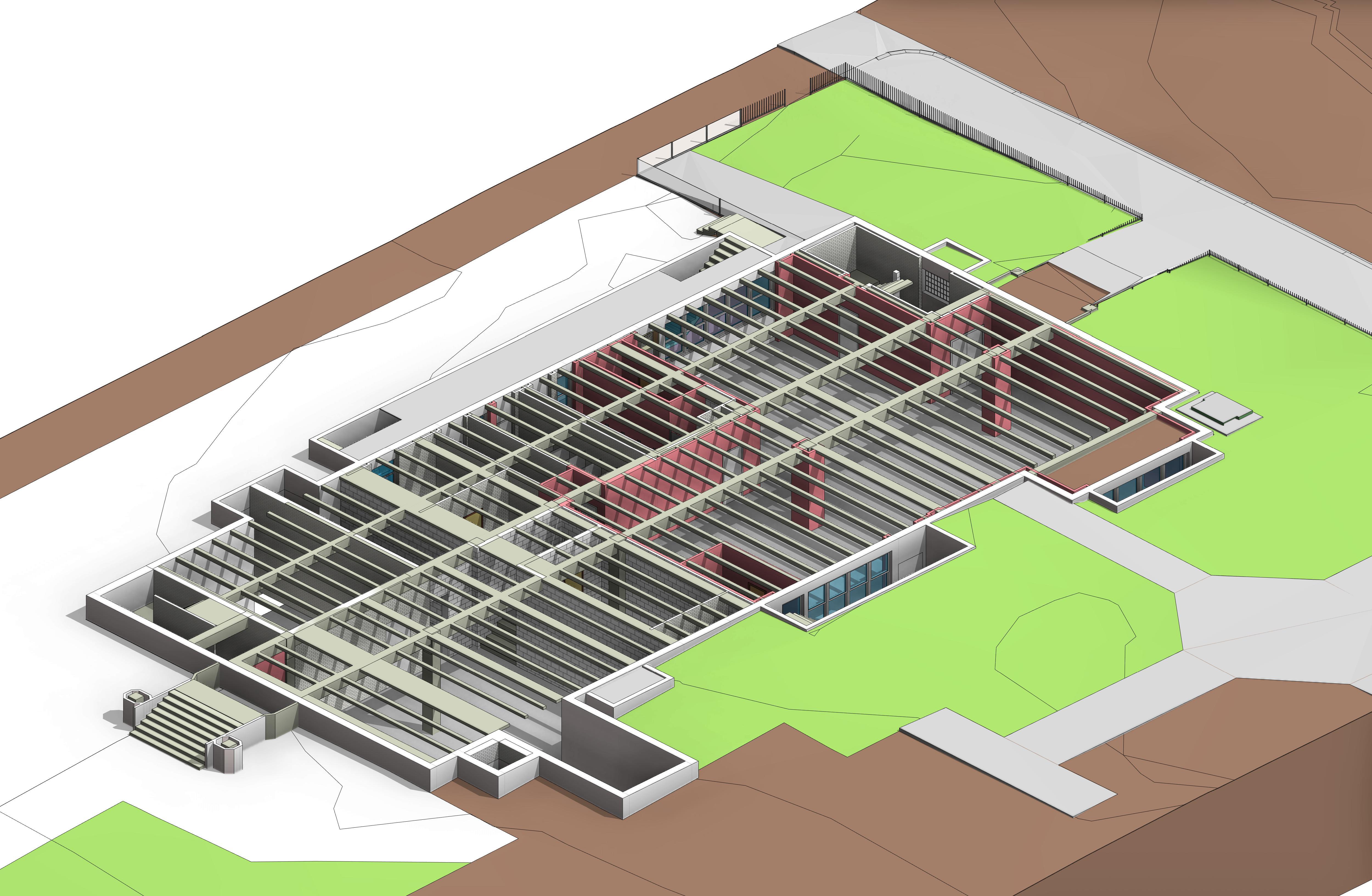4 Major Challenges in As-Built BIM Modeling

As-built Building Information Modeling (BIM) has become essential for construction professionals working on renovation, retrofit, and facility management projects. Unlike traditional design BIM models that represent planned structures, as-built BIM modeling captures the actual conditions of existing buildings with precise digital documentation.
The process involves creating detailed 3D models that reflect real-world measurements, materials, and systems as they currently exist. These models serve as invaluable resources for architects, engineers, and facility managers who need accurate baseline data for future modifications or maintenance work.
However, creating accurate as-built BIM models presents unique challenges that can significantly impact project timelines and budgets. From data collection hurdles to technical complexity, professionals must navigate several obstacles to deliver high-quality as-built BIM modeling services. Understanding these challenges and their solutions is crucial for anyone involved in existing building documentation.
Challenge 1: Data Accuracy and Completeness
The foundation of any reliable as-built BIM model lies in accurate and comprehensive data collection. This challenge often proves to be the most critical bottleneck in the entire modeling process.
Existing buildings rarely match their original construction drawings. Years of modifications, repairs, and upgrades create discrepancies between documented plans and actual conditions. Hidden infrastructure, such as plumbing and electrical systems behind walls, adds another layer of complexity that traditional measurement methods cannot easily capture.
Manual measurement techniques, while cost-effective, are prone to human error and time-consuming for large or complex structures. These methods also struggle to capture intricate architectural details or hard-to-reach areas, leading to incomplete datasets that compromise model accuracy.
Solutions for Improved Data Collection
Modern reality capture technologies offer powerful solutions to these data accuracy challenges. Laser scanning provides millimeter-precise measurements and can capture entire building interiors and exteriors in hours rather than days. These 3D scanners create detailed point clouds that serve as the foundation for highly accurate BIM models.
Photogrammetry complements laser scanning by using high-resolution photographs to create detailed 3D reconstructions. This technique proves particularly valuable for capturing architectural details and surface textures that enhance model realism and utility.
Integrating multiple reality capture methods creates redundant data sources that improve overall accuracy. When laser scanning data aligns with photogrammetry results, professionals can have greater confidence in their measurements and modeling decisions.
Challenge 2: Integrating Existing Documentation
Most existing buildings come with decades of accumulated documentation in various formats, standards, and levels of detail. Paper drawings, CAD files, specifications, and maintenance records often exist in incompatible formats that resist easy integration into modern BIM workflows.
Legacy documentation frequently lacks the level of detail required for comprehensive BIM modeling. Old drawings may omit critical information about MEP systems, structural details, or material specifications. Additionally, documentation from different time periods may use varying standards, making it difficult to create cohesive, standardized models.
The challenge intensifies when dealing with buildings that have undergone multiple renovations or ownership changes. Each modification may have been documented using different methods, creating a patchwork of information that requires careful interpretation and verification.
Solutions for Documentation Integration
Establishing standardized data formats from the project's outset streamlines the integration process. Converting legacy CAD files to Industry Foundation Classes (IFC) format or other BIM-compatible standards ensures consistency across all documentation sources.
Modern data integration tools can automatically process and combine information from multiple sources. These platforms use intelligent algorithms to identify conflicts between different documentation sources and flag areas that require additional verification or field measurement.
Creating comprehensive document management protocols ensures that all team members follow consistent procedures for handling existing documentation. This includes establishing naming conventions, file organization systems, and quality control checkpoints that maintain data integrity throughout the modeling process.
Challenge 3: Managing File Sizes and Data Complexity
As-built BIM models typically contain significantly more geometric detail than design models, leading to massive file sizes that can overwhelm traditional software and hardware systems. Point cloud data, high-resolution textures, and detailed geometric elements combine to create models that may exceed gigabytes in size.
These large file sizes create practical challenges for team collaboration, file sharing, and real-time model updates. Traditional desktop-based BIM software may struggle with performance issues, leading to slow response times and reduced productivity for modeling teams.
The complexity extends beyond file size to include the intricate relationships between building systems, materials, and components. As-built models must accurately represent these relationships while remaining manageable for ongoing use and updates.
Solutions for Data Management
Cloud-based BIM platforms offer scalable solutions for managing large as-built models. These platforms distribute computing resources across multiple servers, enabling smooth performance regardless of model size or complexity. Team members can access current model versions from any location while maintaining real-time collaboration capabilities.
Efficient data management strategies involve organizing models into logical components that can be loaded or unloaded as needed. This approach, known as model federation, allows users to work with specific building areas or systems without loading the entire model into memory.
Level of Development (LOD) strategies help balance model detail with practical usability. By defining appropriate detail levels for different project phases or use cases, teams can create models that contain necessary information without unnecessary complexity that slows performance.
Challenge 4: Skill Gaps and Training
The specialized nature of as-built BIM modeling requires expertise that combines traditional surveying knowledge with advanced BIM software skills and reality capture technology proficiency. Many construction professionals lack this unique combination of competencies.
Operating reality capture equipment, processing point cloud data, and creating accurate BIM models from field measurements requires extensive training and experience. The learning curve for these technologies can be steep, particularly for professionals transitioning from traditional documentation methods.
Software proficiency represents another significant challenge. As-built modeling often requires advanced BIM software features that go beyond basic modeling capabilities. Understanding how to efficiently process large datasets, manage complex geometry, and maintain model performance requires specialized knowledge.
Solutions for Skill Development
Investing in comprehensive training programs provides teams with the competencies needed for successful as-built BIM projects. These programs should cover reality capture technologies, data processing workflows, and advanced BIM software techniques specific to existing building documentation.
Partnering with experienced as built bim modeling services providers offers immediate access to specialized expertise while internal teams develop their capabilities. This approach allows organizations to deliver high-quality projects while gradually building internal competencies.
Establishing mentorship programs pairs experienced professionals with newer team members, accelerating skill development through hands-on learning. Regular knowledge-sharing sessions help teams stay current with evolving technologies and best practices.
Turning Challenges into Competitive Advantages
Successfully navigating architectural BIM services challenges requires strategic planning, appropriate technology investments, and ongoing team development. Organizations that master these competencies position themselves for success in the growing renovation and facility management markets.
The benefits of overcoming these challenges extend far beyond individual projects. Accurate as-built models become valuable assets for facility management, future renovations, and regulatory compliance. They enable data-driven decision-making that can reduce costs, improve building performance, and extend asset lifecycles.
As the construction industry continues its digital transformation, professionals who can efficiently deliver accurate as-built BIM models will find increasing opportunities for growth and specialization. The initial investment in technology, training, and process development pays dividends through improved project outcomes and competitive differentiation.

- Art
- Causes
- Best Offers
- Crafts
- Dance
- Drinks
- Film
- Fitness
- Food
- Spellen
- Festival
- Gardening
- Health
- Home
- Literature
- Music
- Networking
- Other
- Party
- Religion
- Shopping
- Sports
- Theater
- Wellness



